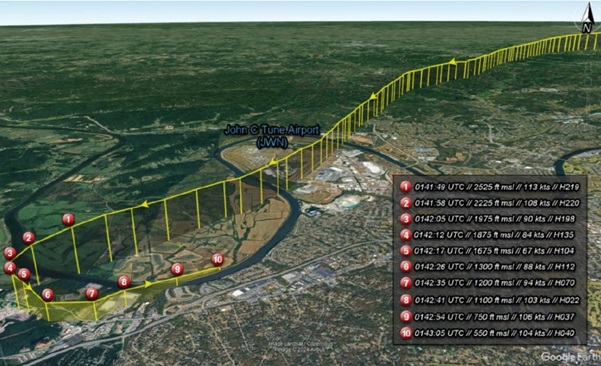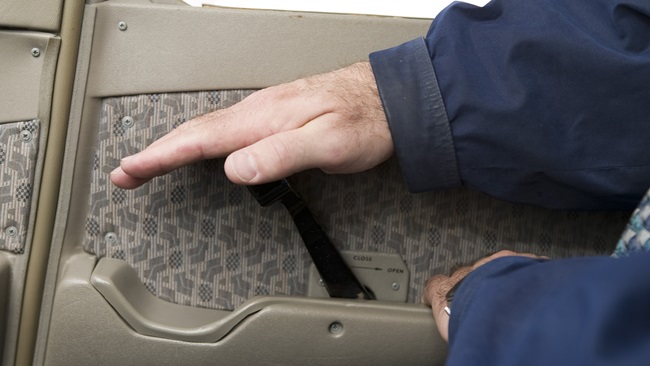Simple arithmetic
If you ever have the mischievous impulse to watch a safety advocate tear out his or her hair, just ask why aviation continues to see so many fuel-mismanagement accidents.
The trend looked good for a while. The number of fuel-mismanagement accidents on non-commercial fixed-wing flights fell by half between 2003 and 2008, only to climb 20 percent over the next three years—while total flight activity slumped. We’ve seen some improvement since: 2013 saw 10 percent fewer than the previous low set in 2008. But the total number of accidents was down more than 22 percent, meaning that fuel mismanagement actually represented a greater share of the fixed-wing accident record.
Contamination—most often by water—plays a small role. Somewhat more common are episodes in which pilots forget that not all the gas is stored in one place. Even systems as simple as the left versus right tank on a Piper Cherokee or Cessna 210 have tripped up the inattentive. In the long run, though, the most common cause is the failure to complete and abide by the results of a simple calculation: Take the amount of fuel on board, divide by the rate at which it’s burned … and get back on the ground before that.
Shortly before noon on June 8, 2014, a man working in his yard near Great Bend, Kansas, heard the noise of a small airplane nearby. He looked up to see it around 200 to 300 feet above the ground, apparently attempting to climb “at a 45-degree angle.” As it drew closer he looked up again and saw it descending, pitched 45 degrees nose-down, until it hit the ground. He later told investigators that the engine sounded "weak as if it had no power" and that it was his impression that the pilot “was trying to pull up.” He immediately called 911, but the pilot and his passenger succumbed before emergency responders arrived.
The airplane was a Powell P-70 Acey-Deucy, a lightweight tandem-seat homebuilt with a parasol wing and conventional gear. Unlike the prototype, which had been fitted with a 90-horsepower Continental A65 engine, this example had been built with a Lycoming O-290-G rated for 125 horsepower. According to the manufacturer, its typical fuel burn in cruise flight was 10.5 to 11 gph. The airplane’s builder flew it for 13 years, accumulating about 400 hours before he sold it to the accident pilot in June 2010. Since that time, the 49-year old, 1,500-hour private pilot had put another 153 hours on the aircraft, including 30 in the preceding 90 days.
On the morning of the accident, he’d called Great Bend’s FBO for a top-off. It took a little less than five gallons to fill the 18-gallon tank. At the nominal fuel burn cited by Lycoming, this would have provided about 1.7 hours of endurance with no reserves. The airplane took off under an 800-foot ceiling at 9:30 a.m.; at 10:04 a.m., the pilot sent a text message to his wife confirming their arrival in Lucas, Kansas, 46 nautical miles north-northeast. Neither the time of their departure from Lucas nor their route home was recorded, but they presumably took off some time after 10:13 a.m., when the pilot sent his wife a second message. The crash occurred an hour and a quarter after that.
Investigators found a 122-foot debris path running from the 16-inch-deep impact scar to the main wreckage. They confirmed continuity of all flight controls. Both of the wooden propeller blades were broken straight back and showed no evidence of rotation at impact. An engine teardown turned up nothing that would have stopped the engine from producing normal power. The fuel tank was crushed, but there was no evidence of stains or blighting in the cornfield where it came to rest.
Adding the time of the outbound flight to the interval between the pilot’s last text message and the crash gives a period about 10 minutes longer than the airplane’s estimated fuel endurance. The NTSB concluded that the accident was caused by “the pilot's improper preflight planning, which led to a loss of engine power due to fuel exhaustion.” They also cited his “loss of airplane control during the forced landing” as a contributing factor. The line worker who’d topped the tank at Great Bend specifically recalled using a ladder in order to do so without overfilling it, making it seem unlikely that he’d left with less fuel than he expected.
It’s easy to lose track of time while doing something you love, and often, it’s also harmless. Flight is one of the exceptions where vigilance is less likely to spoil the fun than its absence.



